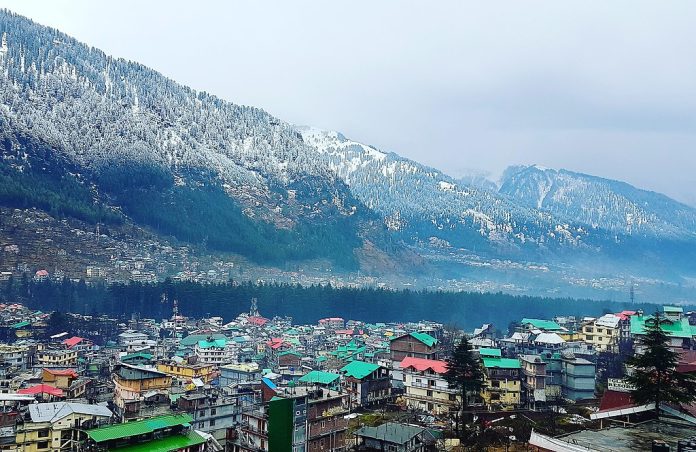By Journey Man
Manali is a beautiful township nestled in the picturesque Beas River valley. It is a rustic enclave known for its cool climate and snow-capped mountains, offering respite to tourists escaping scorching heat of the plains. The tourism industry in Manali started booming only in the early 20th century, mainly because of its natural bounties and salubrious climate.
Once a sleepy village, the modern town cocooned in its rich cultural heritage and age-old traditions is now one of the most popular destinations of India. The place is a classic blend of peace and tranquillity which makes it a haven for nature lovers and adventure enthusiasts, who want to get off the main tourist trails and experience nature up close.
The glacial water of River Beas after rushing down the slopes of Rohtang Pass allows adventure sport activities of rowing, white water rafting and river crossing as it meanders through the valley from Manali to Kullu. The open valley with terraced fields dotted with hotels and resorts has tourists converge on this township in summer from April to July and in autumn to early winter from October to December.
If you have ever imagined sitting by the gushing waters of a snow-fed stream, or waking up to a glorious sunrise with breathtaking views to soak in, Manali is the place to be.
History of Manali
Manali geography and history gives an overall idea of this beautiful region. Manali is situated in the Kullu district of the Indian state of Himachal Pradesh at the coordinates of 32.16′ North latitude and 77.10′ East Longitude. Situated at a height of 8612 feet (2625 meters), the hills of Manali offer stunning landscape.
Manali has its own unique culture and tradition which is deeply rooted in the hearts of the local people. It was in the 17th century that Raja Jagat Singh brought a golden idol Raghunathji (one of the manifestations of Lord Rama) to the throne of Manali. Till now local Hindu people residing in Manali believe that Raghunathji is the presiding force in Manali. The proof of this fact lies in the evidence demonstrated by various temples devoted to Raghunathji in beautiful Manali.
With the invasion of the British in Manali, the culture of the hill station underwent a subtle shift. The apple plantation cultures as well as the trout fishing sport were introduced in Manali by Britishers. Most good roads, restaurants, churches and other artefact of the tourist culture were also introduced by Britishers.
Winter sports like skiing, snow racing and skating were also popularized by foreigners. However Manali’s rich cultural heritage was stained in the 70’s and 80’s when it was involved in the production of Marijuana (a powerful and potent drug).
Conventional tourism was lulled for some years. In the 90’s the government took strong steps to stop these nefarious activities and Manali regained its popular tourism status.
Ancient history of Manali
Ancient history has it that all humankind originated from the seeds of Manu. Manu is also known as the law enforcer and the father of all mankind. Legend has it that Manali was the chosen home of Manu as he was struck by its unique beauty and serenity after wandering through the valleys of Himachal for years.
The scriptures say that Manu had to step off his ark to recreate the life of humans after the floods destroy all humans. Manu built his first home in this particular spot which later came to be known as Manu-alaya or Manu’s home.
The home of Manu was the first established home of human kind and Manali is since then accredited with the honour of creating the first abode of mankind. Since then Manu-alaya came to be known as Manali which then became famous as one of the prettiest hill stations of India.
Manali is also referred to in folklore as the valley of Gods. Old Manali has an old temple which is devoted to the worship of Manu. Manali derives its name entomologically from the word Manu-alaya or the abode of Manu.
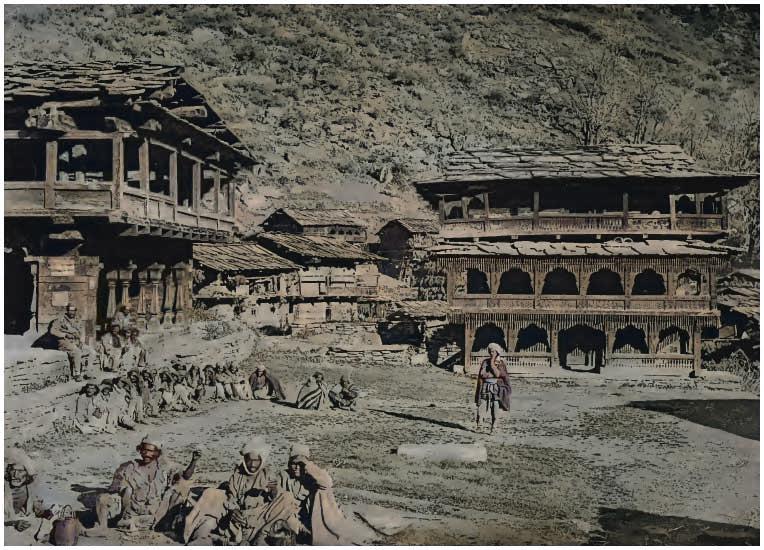

Manali as the legend says was completely inaccessible to normal human kind because of its geographical positioning. Only nomads residing in the crevices of hills who hunted for a living abounded in the place now known as Manali. These hunters were also known as Rakshas and they existed for many years before being transformed into a more civilized mode of living.
Next were the shepherds who formerly resided in Kangra valley. Inspired by the fertile land and the diverse flora of Manali, the shepherds turned into farmers and set up acres of natural farms here. They grew apples, berries, vegetables and cherries. These farmers formed a unique class known as Naurs. The Naurs are unique to Manali and they have never moved out of the valley. Till today some of the descendants of Naurs can be found in Manali.
How to reach
A beautiful hill station attracting the eyes of thousands of people every year, Manali has been a favourite for a very long time. Best of all, it is an ideal weekend destination from the capital due to its close proximity of 535 km from Delhi.
By Air: The nearest domestic airport to Manali is Kullu-Manali Airport (KUU) in Bhuntar, which is located at a distance of 50 km from Manali. Regular flights connect the airport to Delhi and Chandigarh. You can book a cab or a taxi to go to Manali from the airport which should take about 2 hours to reach your destination. For tourists coming from other countries, the nearest international airport to Manali is Indira Gandhi International Airport (DEL) in Delhi.
By Train: Manali does not have a railway station. To reach Manali by railways you have to get down at the nearest railway station to Manali which is Joginder Nagar Railway Station at a distance of 162.6 km from Manali.
The Kalka-Shimla train track is a UNESCO World Heritage railway in itself. An engineering masterpiece of the British era, the journey passes through some spectacular landscape.
By Road: Since Manali is a very popular hill station, the roads connecting to this place are very pleasant. It should be a beautiful journey if you are travelling by road with scenic views of the mountains and the river.
WHAT TO SEE
The Mall Road
The Mall, or main road of Manali is the hub of activity in this tourist town, lined with hotels, restaurants, shops, the bus station and many travel agencies. Though it carries the same British epithet as its counterpart in Shimla, the Mall of Manali has an entirely different character from the colonial flavour of the former. It is more of a busy commercial street with modern concrete blocks of hotels that spills over with tourists in the peak season.
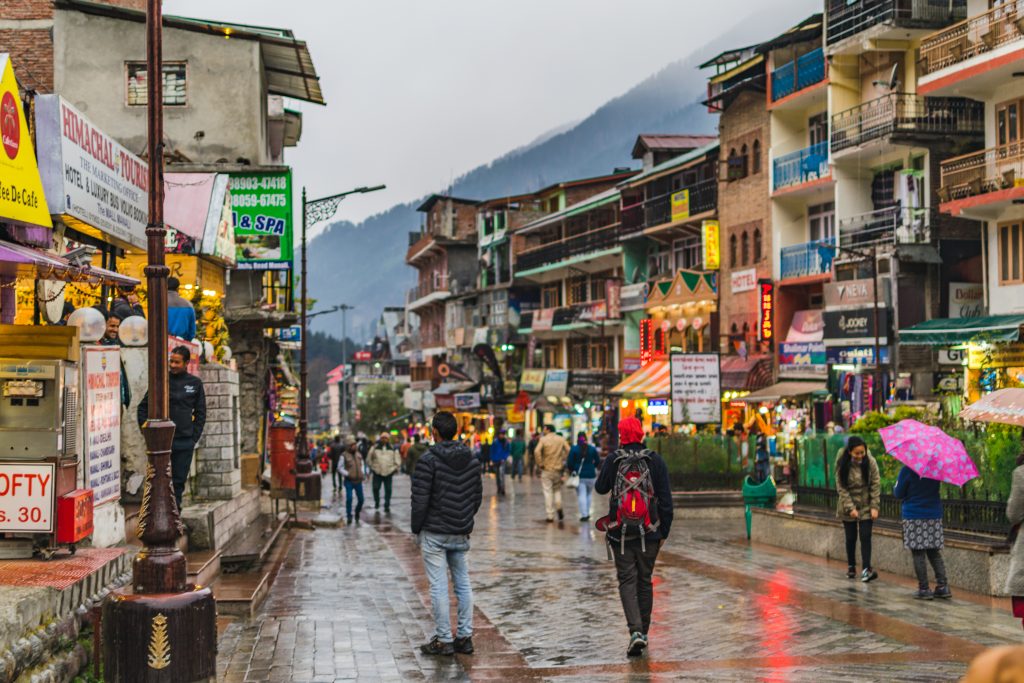

Most of the hotels overlooking the foaming Beas River, however, do offer pleasant views of the valley, green terraced fields and the surrounding orchards.
Manalsu Nala: To get a more authentic flavour of the area, take a half-hour walk from the Mall across the Manalsu Nala to reach the village of old Manali. Also known as Manaligarh, the village has a ruined fort and a cluster of houses built in the Pahari style – with heavy stone roofs and wooden balconies projecting out of the first floor. According to popular belief it is here that Manu, the lawmaker, lived around the 2nd century BCE. His treatise, the ‘Manusmriti’ is the foundations of Hindu law and of the rigid caste system based on varna or profession. Considered one of the most orthodox Hindu texts with strict role definitions based on gender and class, the Manusmriti continues to be followed by many devout Hindus even today.
In the centre of the village is the Manu Maharishi temple, a relatively new shrine dedicated to Manu. The village itself is an idyllic break from the rush of main Manali, surrounded by terraced maize fields and apple orchards. There are several guesthouses and cafes lining the path to the village.
Hadimba Devi Temple
Hadimba or Dhungri temple in Manali is one of the most important temples in the region. This four story wooden temple is located in the middle of a forest called the Dhungiri Van Vihar a 2 km walk from the Tourist office in Manali. Maharaja Bahadur Singh built the present wooden pagoda-like temple in 1553 after forest fires burned down earlier structures.
Standing on a stone platform surrounded by old deodar trees, the three-tiered temple is crowned with pennants, brass bells and a trident. Carvings of animals, plants and folk deities adorn the temple, while hunting trophies hang over its entrance.
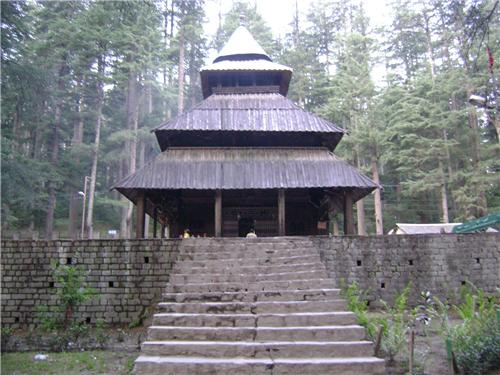

Inside the shrine is the brass icon of the goddess, surprisingly tiny compared to the huge temple structure and the legendary prowess associated with her. The shrine is within a natural cave formation dominated by huge rock. A set of enlarged footprints on the rocks is believed to be of Hadimba, herself.
In mid-July the idol from old Manali is brought to this temple for a major festival. As part of the frenzied celebrations, several animals including a buffalo and a goat are sacrificed to the goddess. The blood falling on the stones is channelled to the mouth of goddess Hadimba. Not for the faint-hearted, this ancient ritual draws large crowds, along with some pickpockets who take advantage of the spellbound mobs.
Gadhan Thekchoking Gompa
This Gompa dominates the Tibetan area around the bottom of the Mall in Manali. The Tibetan refugees built the Gompa in the late 1960’s. The Gompa is covered with brightly coloured frescoes and a mid size Buddhist statue. It also carries a list of the martyrs killed in the occupation of Tibet of 1987 to 1989. Inside the brightly painted prayer hall is a statue of Shakyamuni (a form of the Buddha).
The monastery is maintained through donations and the sale of carpets woven by the lamas within the temple workshop. A smaller gompa near the market has a large gold-faced image of Buddha, which is best viewed from its first floor verandah. Monks can be seen printing prayer flags in the open terrace.
Temple of Manu
Slippery stone paths lead through the old village houses up to the temple of Manu. Manali is named after the sage Manu who meditated when he came in this area.
Tibetan temple
Tibetans have a base in Manali too. There is a large modern Tibetan temple to the South of the bus stand and also a small handicrafts centre.
Old Manali
The old Manali area is located some 3-km from the present day Manali. The old Manali is covered with guesthouses, which look ancient now, and orchards where the livestock move at will.
Vashishta hot sulphur springs
This small village near Manali is famous for its scenic beauty. The village has a temple dedicated to Lord Rama and Vashishta Muni. The village has some hot water springs, which are said to carry medicinal properties. It is a picturesque little place, 3-km out of Manali but on foot the distance is a bit shorter.
Mountaineering Institute
The Mountaineering Institute located at Manali provides training facilities for basic and advanced climbing both for Indian nationals and foreigners. This institute also conducts other adventurous sports activities like high altitude trekking, minor mountaineering, rock-climbing, skiing, and high altitude rescue and relief courses. The institute has sufficient lodging and boarding arrangements and equipment can be hired for trekking purposes.
Adventure Sports
Rafting: The Beas River flowing through Kullu valley is suitable for not only white water rafting but is ideal for canoeing and kayaking too. Open between May to September.
Skiing: Near Manali there are some slopes, which have been rated the best for skiing in the world. The Solang Nullah, Patalsu, Kothi, Marhi and Rohtang slopes are very good for skiing in the winters as well as in summers.
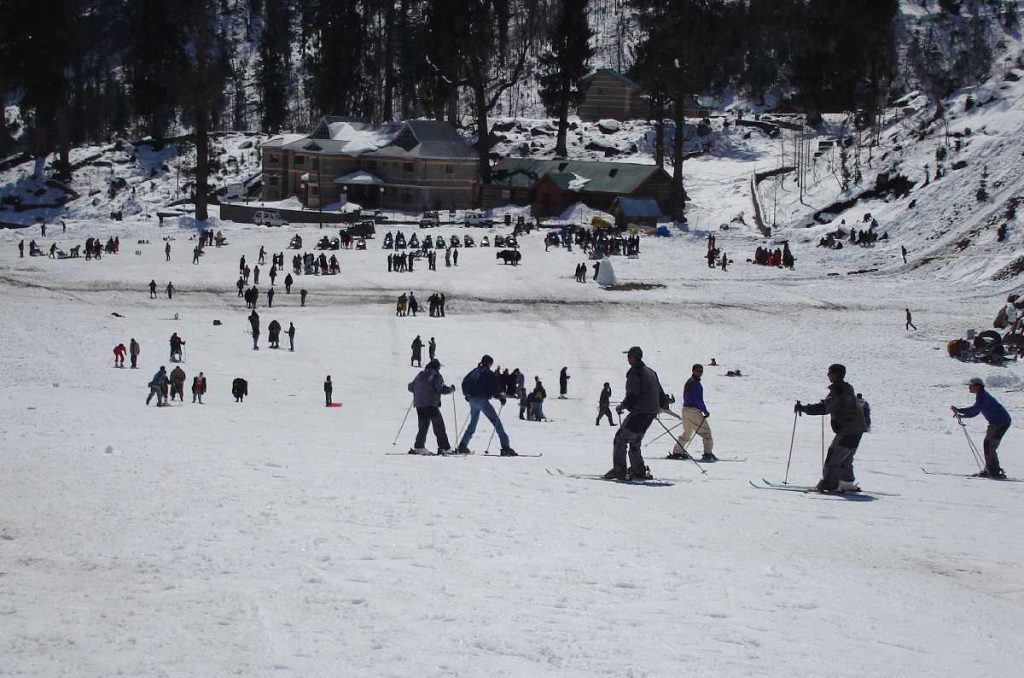

Heli skiing: For high mountain thrills perhaps nothing can surpass the magic of heli-skiing. The sport is available in the area abound by the Hanuman Tibba, Rohtang Pass, Deo Tibba and Chanderkhani Pass near Manali.
People and Society
Religion: Traditionally, Manali is a Hindu town, with important shrines dedicated to goddess Hadimba and the temple of Manu. In recent times, however, a large population of Tibetan refugees has set up a mini-township with distinctive gomphas (monasteries) and prayer flags fluttering across the houses.
Language: The local language in Manali is part of the group of languages known as Western Pahari. A Hindi dialect, which is derived from Sanskrit and Prakrit, Pahari has a number of local variations. The version spoken in Manali is known as Mandiali.
The influx of a large number of Tibetans has meant that Tibetan is also now used by a number of people, while most people associated with travel and tourism will be familiar with at least basic English. Hindi is universally used.
Culture and Craft: Local crafts include woollen products like the namdas (rugs), blankets and the famous Kullu shawl. Locally made footwear called the pullan and baskets woven by village women are also available. The Tibetan inhabitants of Manali have set up a craft centre and outlets selling carpets, thangkas (religious wall hangings), prayer wheel, masks and silver jewellery.
FESTIVALS
Though almost all the festivals are celebrated with zest and devotion, Dussehra gets special attention all over the valley. The festival is celebrated in the month of October during the autumn season when the rest of the country celebrates Durga Puja and Vijaya Dashami. The celebration goes on for a few days when all the people of the Kullu valley take part enthusiastically.
The Hadimba Devi fair is another important event in this place and a rather big fair is organized in the Hadimba Devi temple complex. People from in and around the countryside come to visit this fair, which is held during the spring season when the valley is at its spectacular and colourful best.
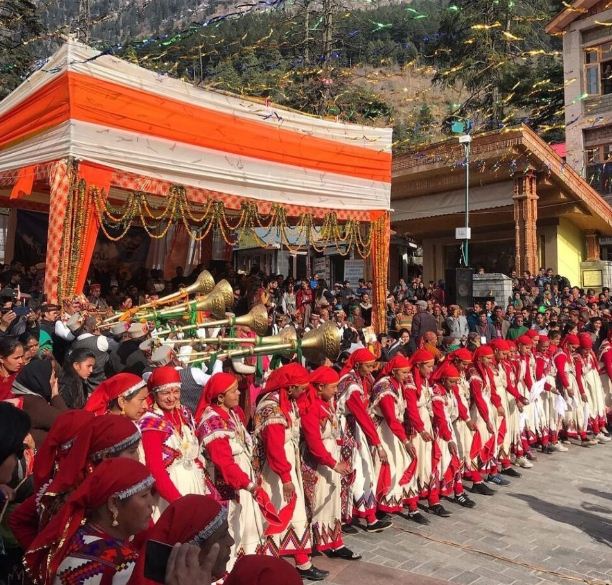

The Doongri Forest festival, which is basically organized by the women folks of this place, is another major event of this place. Moreover, the winter sport carnival held in the mid-February draws a good number of tourists from all over the country and abroad.
Winter Carnival
Snow continues to play a major part in February’s festivals and Himachal Winter Carnival is also held this month. Ski slopes of Kufri, Manali and Narkanda come to life with adventure seekers competing their way downhill. For daredevils, Manali, as a base camp, offers the best opportunity for Heli-Skiing.
The Spring festival is also called Basantotsava or Pipal jatra and takes place at Dhalpur ground Kullu from April 28 to 30. This fair has been declared a state festival by the Himachal Pradesh government. As it marks the beginning of the spring season (and also the tourist season) in the valley, it is also known as Spring Festival.
Wildlife
The woodlands of Kullu preserve a variety of wildlife. The district has five wildlife sanctuaries of which Manali, Kais, Kanawar, Khokhan are in Kullu Valley and the Great Himalayan National Park is in Sainj valley. These sanctuaries preserve animals like musk deer, common fox, leopard, ibex, Himalayan tahr, porcupine, bear (black & brown), goral, Himalayan yellow throated marten, langur and flying squirrel etc. and pheasants like cheer pheasant, monal, western tragopan etc.
The Great Himalayan National Park is situated in the Sainj valley of Kullu district. The park harbours more than 300 species of birds and over 30 species of mammals. The park provides habitat to some of the highly endangered species like western tragopan, snow leopard and musk deer.
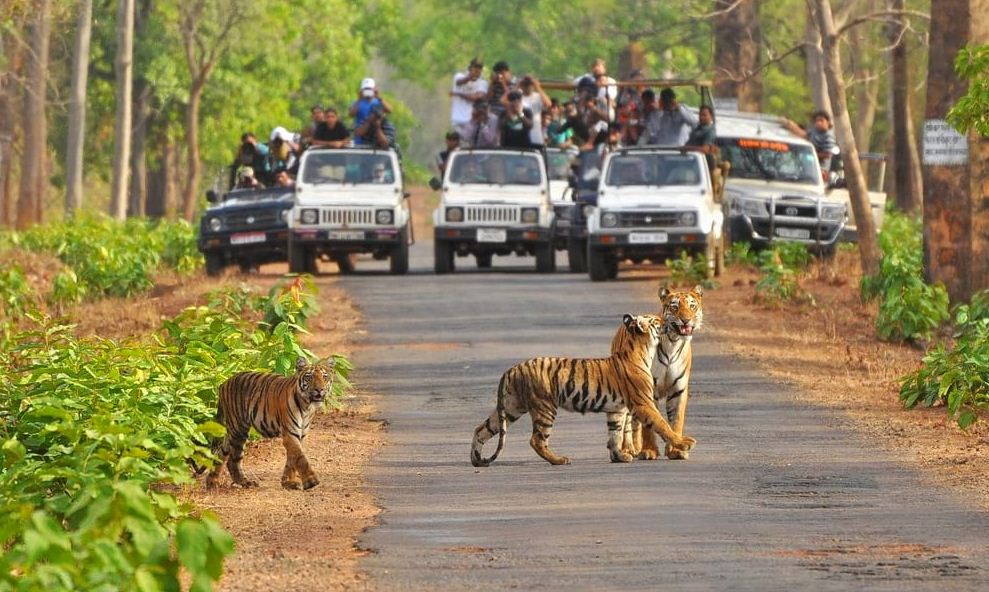

Manali sanctuary is located 1 km away from the international hill resort Manali. The main species of animals found in the sanctuary are leopard, musk deer, black bear, brown bear, and Himalayan ibex. The birds found in the sanctuary are monal, koklas, chakor, tree creepers, snow pigeon, kingfisher etc. Snakes and lizards are also found.
These sanctuaries are rich in trees like oak (quercus incana), fir (abies pindrow), kail , spruce (pices smithiana), deodar (cedrus deodara), bras (rhododendron arborium), maple (acer pictum), walnut (juglans regia), fig (ficus spp), poplar (populus ciliata), pine (pinus roxburghii), aesculus (aesculus indica) etc.
The best time to visit these sanctuaries is April to June and September to October. During this period the weather and visibility is suitable for spotting animals and the high reaches are easily accessible.
Where to stay
Himalayan heights Manali: starting price @7388
Offering views of the Himalayas, this relaxed hotel is 4 km from the NH3 road. It’s 7 km from both Jogini Falls and Hadimba Devi Temple.
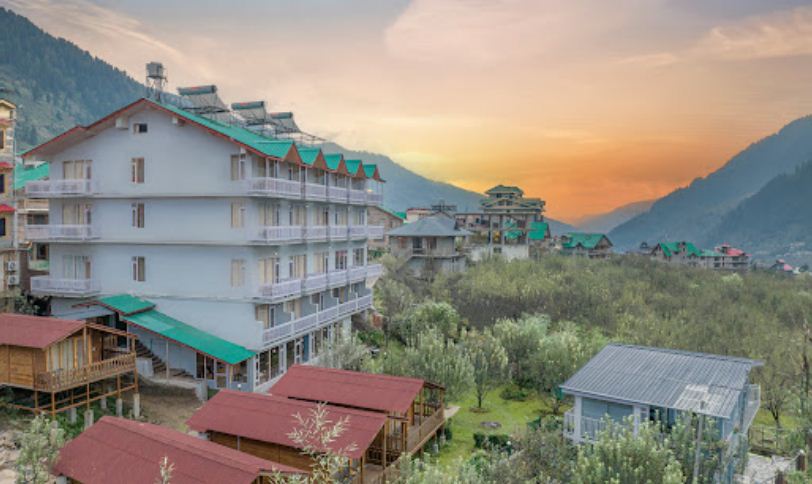

Renest River Country Resort: starting price @3919
Located off the bustling Mall Road, this 58 room resort overlooks the river Beas amidst pine and cedar and the majestic Himalayas.
Hotel Himalayan Top : starting price @2999
Hotel Mountain Top is a dream destination for celebrating holidays; hotel is located at the most scenic point, amidst the musk apple, cherry orchards flanked by century old coniferous forest. Hotel is located at the top and provides you with a picturesque top valley view of the entire Manali. Savour your visit with our magnificent hospitality and scenic views.

